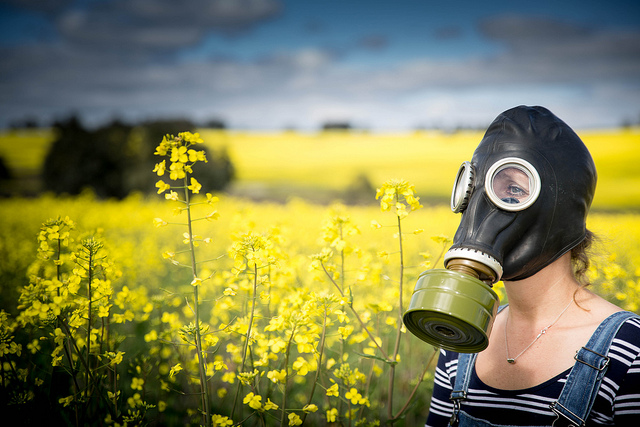
GMOs Will Never Feed the World, but Here’s Something That Will
One of the biggest lies we’ve been told about genetically modified organisms is that they’re the only solution to feed the ever growing world population. We all know this is a problem, one of the biggest our humanity has ever faced, so we gobble up any solution brought forth.
A compassionate heart is forced to choose between changing the system or finding a new way. I encourage you to look outside of the existing system, to thrive on this earth we need to create a new model that doesn’t revolve around exploiting it. In a world run by the almighty dollar, think of your dollar as a vote. Why should we vote for a company who refuses to even label their product, if there was nothing to worry about, they wouldn’t be so shy as to put a little sticker on our food declaring its genetically modified nature.
February 11, 2015 | Source: BlogHer | by nakedcuisine
One of the biggest lies we’ve been told about genetically modified organisms is that they’re the only solution to feed the ever growing world population. We all know this is a problem, one of the biggest our humanity has ever faced, so we gobble up any solution brought forth.
A compassionate heart is forced to choose between changing the system or finding a new way. I encourage you to look outside of the existing system, to thrive on this earth we need to create a new model that doesn’t revolve around exploiting it. In a world run by the almighty dollar, think of your dollar as a vote. Why should we vote for a company who refuses to even label their product, if there was nothing to worry about, they wouldn’t be so shy as to put a little sticker on our food declaring its genetically modified nature.
Why GMO’s Will Never Feed the World
The guise that we can get away with using less chemicals to grow GM foods is a joke. If anything, this type of organism actually creates super bugs, resistant to roundup and any other conventional agricultural chemical. Of course the mainstream solution is to create new, better, stronger chemicals to kill this new breed of insects. But what of our environment?
GMO Fiction #1: GMO crops don’t need pesticides and herbicides to thrive, so they’re better for the environment.
Monsanto would have us believe that if we buy their infertile toxic seeds, we needn’t worry about spraying as many pesticides. This may be true the first year, or even the second, but overall the long term sustainability of GM crops is really quite pathetic.
Yields decrease, the soil becomes infertile (1), insects become resistant to the chemicals and thus more chemicals are needed to produce less and less food.
We see this example in the case of Argentina, a nation who embraced biotechnology when it first entered the scene, and whose population now reaps the consequences. In 1990 Argentine farmers used 34 million litres (9 million gallons) of agrochemicals, by 2013 that number increased nine-fold to more than 317 million litres (84 million gallons) of pesticides. A visual representation of the devastating effects caused by a rapidly expanding export economy can be seen here, but be warned, it’s not pretty (2).
Feeding the world isn’t such a concern when there is no world left to feed. The harsh reality of these agro chemicals is seen far more in third world countries where the regulations aren’t as strict. Consider the chemicals we are talking about are serious endocrine disruptors, known carcinogens, that need to be handled with the utmost caution. Farmers in poor countries aren’t given proper training, governments aren’t regulating whether crops are sprayed 50 ft away from a school yard or hospital. Everyone becomes susceptible to the deleterious effects of these agrochemicals and the results are far from a table full of food at dinner every night.
If the goal of Monsanto’s GMO crops is to feed the world, it’s clear they are doing the direct opposite.
